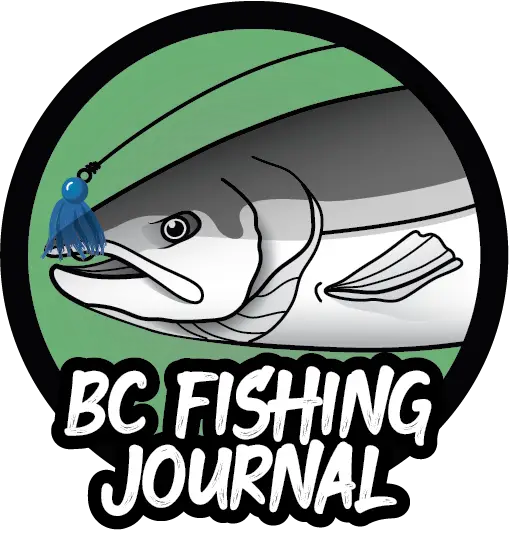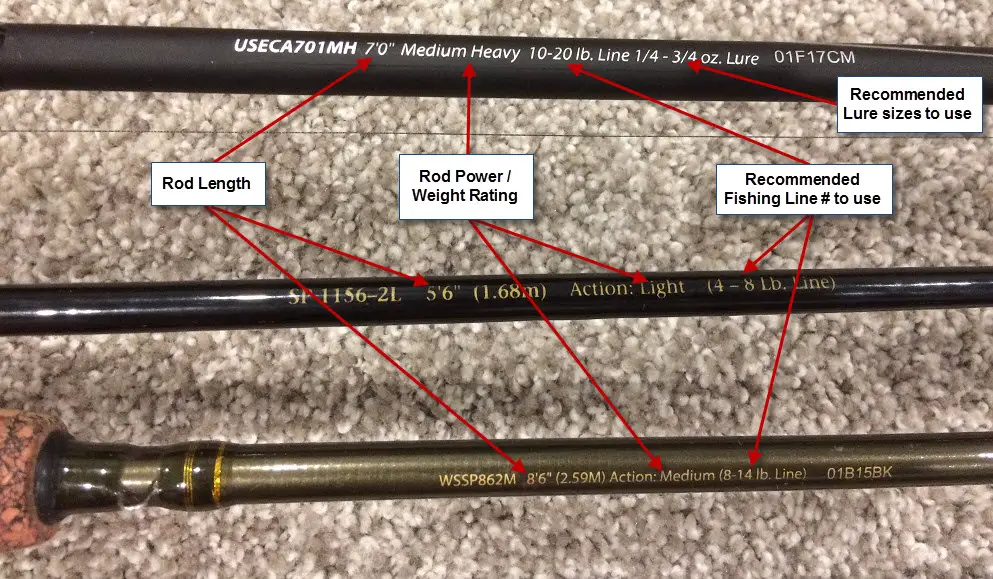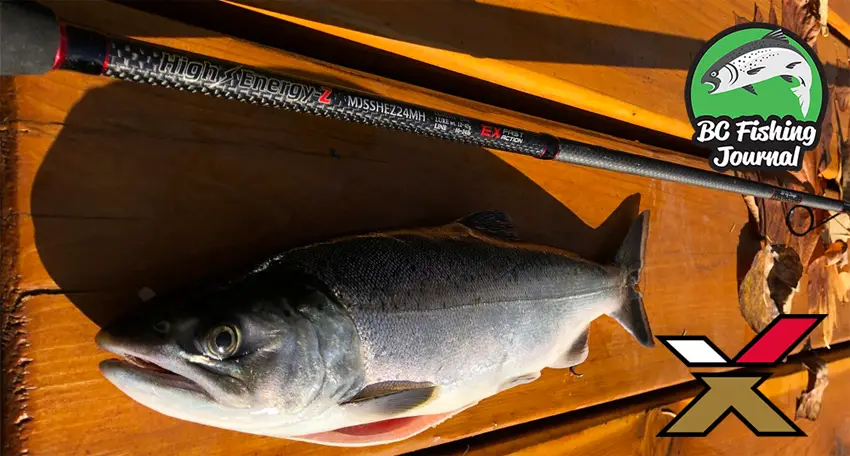
Twitching Jigs Technique and Maximus Jigging Rods Review
One of the fast growing fishing techniques for Salmon and Trout is “twitching jigs”. In fact, this technique could be used on a vast number of fish regardless of where you are in the world. For me here in the Pacific Northwest twitching jigs for Salmon has been an absolute game changer for me on the river. This is especially true for Coho and Chum salmon. Because of the effectiveness of twitching jigs I’ve seen the fishing industry begin to put forward a variety of rods and lures to accommodate this technique. I’ve loved seeing the industry come out with some fantastic new ideas and really invest in this technique. And that’s what this article is all about, it’s all about twitching jigs, the recommended rods and setup and I’m also doing a review of some very affordable twitching rods by Maximus Rods that I’ve been testing recently.
How to Twitch a Jig?
The twitching jig technique is essentially giving the jig an up-and-down motion through the water column while retrieving it. The action of the jig is caused by raising or lowering your rod tip, by elevating the jig rises in the water column and by lowering it drops down in the water column. The up and down action of the rod is created by small wrist movements or flicks (aka. twitching your wrist). You don’t want to be swinging your rod up and down with large or dramatic movements, between the heights of your rod tip there shouldn’t be a massive distance. Start with slower rod movements upward and quicker movements down to begin. The idea is to have your jig bouncing up and down in the lower section of the water column (near bottom). More on the action further below (including a YouTube video link).
Best Rod Specifications for Twitching Jigs
Type of Rod – Spinning rods (and a spinning reel) are ideal for this type of rod action and technique. More on that later.
Length – I highly recommend a spinning rod between 7-8 feet long. This 7′ length is important as the higher you elevate your rod tip the higher the jig will move up in the water column. You might be thinking “why don’t you use a 10′ foot rod then?”. And the reason for that is two-fold; one – twitching or popping the rod with your wrist with longer (heavier) rods will be physically demanding and pretty tough on your wrist, two – rods over 8′ will elevate or pop up the jig too high in the water column (the jig should be bouncing a few feet between high and low jump).
Action – You want a fast rod action so there is less bend in the middle of the rod. Bend is a bad thing, it loads up the rod and will launch the jig to high and fast (doesn’t provide a smooth twitching technique). You want a stiffer rod with a very sensitive tip in order to feel how your jig is moving in the water column.
Power / Weight – You need a Medium-Heavy or Heavy power rating for a good twitching rod. I should qualify and say power ratings should be aligned to the size of the target fish (mean a heavier action is better suited for larger fish). Additionally, the heavier rating typically goes with the more stiff rod you’ll need for that easier twitching motion.
Lastly, the actual weight of the rod is important as the wrist fatigue can come into place when you’re twitching all day. It shouldn’t be a surprise but the lighter the better, but certainly don’t sacrifice weight if you can’t get the other action and power ratings mentioned above.
What are the Best Twitching Jig Rods for the Money?
As mentioned at the beginning of this article there are a number of rod manufacturers beginning to put out twitching rods. My biggest push back on these newer rods is the price points as many of them are priced well over $200 USD. This is what prompted me to look at more affordable rods but with the same twitching rod specifications and quality I was looking for.
I came across this company Maximus rods that manufacturers rods in Korea. They have a massive selection of rods that cover a variety of species and types of water! And that’s what led me to their more affordable twitching rods.
Maximus Jigging Rods
Maximus calls them “jigging rods” but these are perfectly designed for twitching jigs. I got 2 of their spinning jigging rods: The Maximus High Energy rod and the Advisor spinning rod. Their rods have some quality components like Fuji guides (same ones used on Shimano rods), cork handlers and reel seats. They also come with a 2 year warranty. Here is my review on the 2 of their jigging rods I chose for twitching jigs for Salmon.
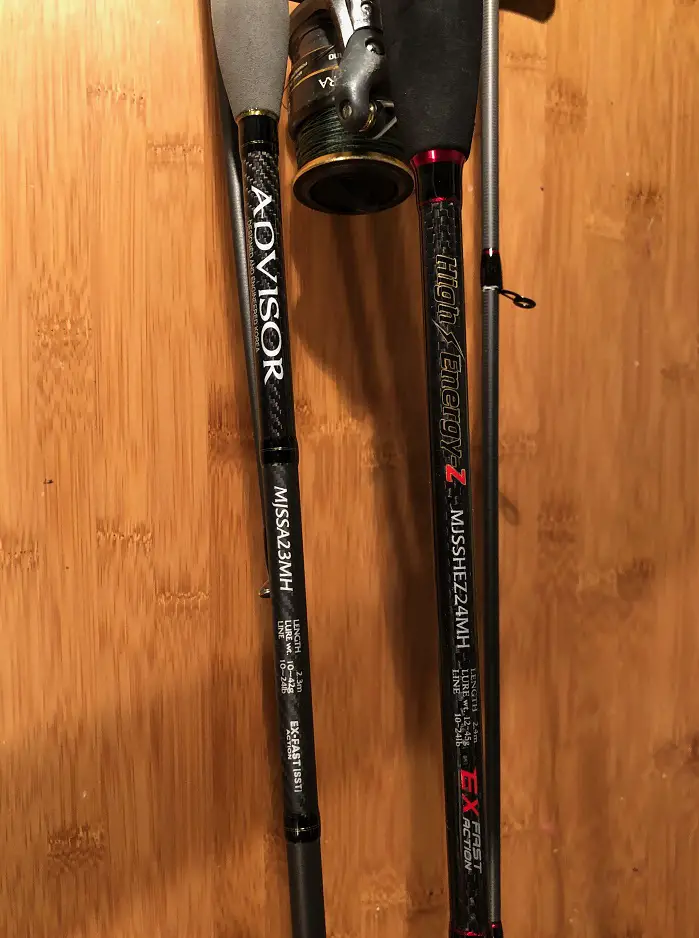
Maximus High Energy Jigging Rod
This is a great option for a twitching rod! The model I chose was perfect for targeting Coho this past Fall. I even caught a few Chum on it as well which were approximately 10-12 lbs in size. I’m planning to continue to use this rod for Steelhead in the Winter and Spring months.
What I like about this rod, the length is perfect for controlling the depth of the jig when doing your twitching. The rod length is an inch short of 8 feet, which seems perfect in getting the ideal twitching distance between the high and low points. The rod doesn’t feel flimsy or have a big whip to it (which is terrible for twitching). It has a very fast action on the tip meaning it has less bend in the rod and recovers to a straight position very quickly in between twitches.
When I first picked up the rod, I can recall my initial thought being oh no, it’s too light it won’t be able to handle the heavier fish. Thankfully that was NOT the case as the medium heavy backbone definitely held up for all the larger Salmon I hooked into. The light weight of this rod will make it easy to twitch jigs all day without any wrist fatigue. That’s certainly something anglers don’t often think about. Fishing a light rod all day makes for a much more enjoyable day on the water.
Rod sensitivity is key and the feel in this rod is pretty special. The first cast with this rod I launched a 3/8 oz twitching jig and was really impressed with how I could feel the jig movement in in the water. In fact, the first cast I ever took with this rod was highlighted in one of my Halloween gag/joke Youtube videos for Coho & Chum, you can view a short clip of that video here. Spoiler, I ended up loosing that fish on my own foolishness but the rod definitely held up!
Anyway, I’m planning on getting this twitching rod rigged up for Winter Steelhead season and look forward to the early Spring where they get really aggressive here in the Pacific Northwest. I’ll definitely continue to post more information on this rod and you’ll likely see it in our YouTube channel as well!
Quick Specs on the High-Energy Rod
This rod has 10 models that offer a number of lengths all with a the medium-heavy or heavy power rating. The model I chose was the MJSSHEZ24MH which is a medium-heavy 7’11 spinning rod. There are 8 guides with an extra-fast rod action. The rod is rated for a mainline of 10-25 lb (mono) or 15-60 lb (braid).
If you want more information on this rod check out the Maximus-Rods website.
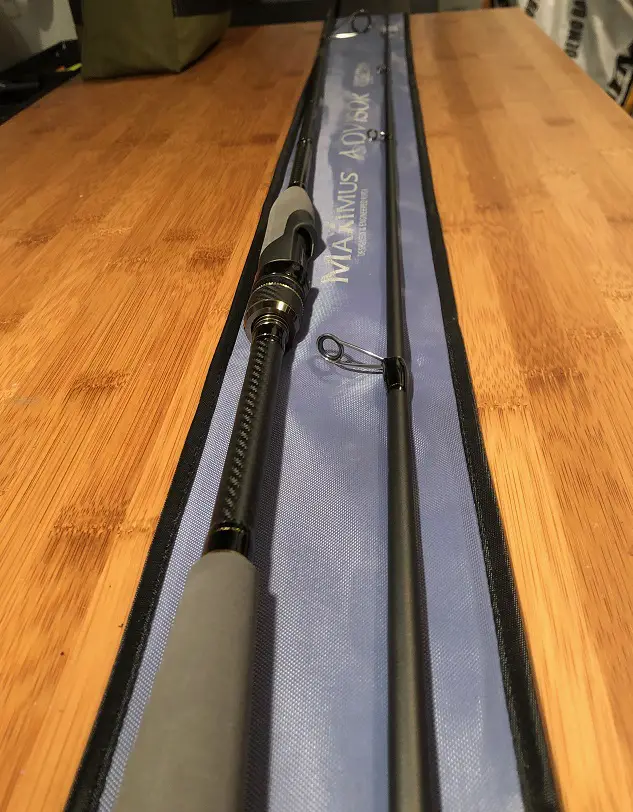
Advisor Spinning Rod
This rod was very similar to High-Energy rod I detailed above. This rod is 6 inches shorter and definitely has a lighter feel. The rod is perfect for Coho (smaller salmon and trout). I wouldn’t recommend this for the larger Chum or Chinook as the lighter structure feels more geared for the medium to smaller fish. That said, this rod has 16 different models, so perhaps a longer and heavier model would suffice. I can only comment on the rod I used (model in specs below).
The diameter of the backbone (just above the reel seat) was a little smaller than the High-Energy rod so it would definitely be suited to throw smaller to micro-sized jigs. It would also throw a lighter mainline better than the high-energy rod.
As for the rod body itself, it’s had the same fast action with the fast bend recovery. This is not a limp noodle by any stretch. To summarize, it fishes very similar to the high-energy jigging rod but would be best suited for fish in the 0-8 lb category.
Quick Specs on the Advisor Rod
This rod has 16 different models with again a number of sizes and broader range of rod weights (from medium-light to extra-heavy). The model I’m fishing is the MJSSA23MH which is a 7’5 medium-heavy spinning rod. There are 7 guides on this rod and it has the similar mainline rating as the High Energy with 10-25 lb mono and 10-50 lb braid. For more information on the Advisor check out the rod page here.
The Twitching Jig Setup – Mainline and Leader
We’ve covered the spinning rod above and I’m not going to detail the reels but if you do want more info on these check out our spinning reels page. The important piece for twitching jigs is having a mainline that has little to no stretch. Non stretch line will get you better hook sets and will give you a much better feel for you jig as you’re twitching it. That said, you should be using a braided or fluorocarbon mainline. Personally, I recommend braided line as the best line for twitching jigs as you’ll you can see the line moving with your twitching motion so you have a better idea how the jig is performing.
You should however have some sort of bumper or leader line between your mainline and the jig. This is typically a 18″ to 4′ piece of fluorocarbon leader line. The length of the leader line should be dependent on the clarity of the water: clearer the water the longer the leader line, less visibility the shorter the line can be. An invisible leader line is important so the colored braid doesn’t spook the fish. You can connect the braid to the leader line with either a double uni knot or a barrel swivel.
In really colored up water conditions (less than 6″ visibility) or with very aggressive fish you can get away without using a leader line and tying braid directly to your jigs. I’ve done this when I’m fishing for Chum Salmon as they’re very territorial and aggressive to anything coming near their doe or her eggs, they don’t worry about a moss green colored line. All that said, I’d still recommend using a leader line for pretty much most of the fishing scenarios.
The Twitching Jig Weights & Colors
There is a vast range of twitching jigs sizes from micro ice fishing jigs to giant salt water sizes. However in keeping with the idea of the twitching technique is primarily used in rivers, lakes and ponds. Twitching jigs has become increasingly popular for Salmon and Trout in moving rivers and the most common jig weights for these fish in these rivers are:
- 1/4 oz
- 3/8 oz
- 1/2 oz
If you’re buying your first twitching jig(s) and don’t know where to start, buy the 3/8 oz twitching jigs as they can be used in a lot of water scenarios and for a number of species.
Twitching Jig Colors
I tie my own twitching jigs and usually have 2 contrasting colors. I select colors based on the species. For Coho my favorite colors are: Blue & Black, Black & Purple, Blue & White, and Chartreuse & Pink. For Chum my favorite colors are: Purple & Pink, Purple & Chartuese and simply Purple & Flash. I haven’t spent a a ton of time exploring colors for other Salmon species but will definitley start trying more twitching jigs in the coming Salmon & Steelhead seasons.
Outside of colors, I often like to include a long rabbit fur tail or a plastic grub. Personally, I’m a bigger fan of the rabbit fur tail, but that’s a personal preference and I’m sure many others would say otherwise.
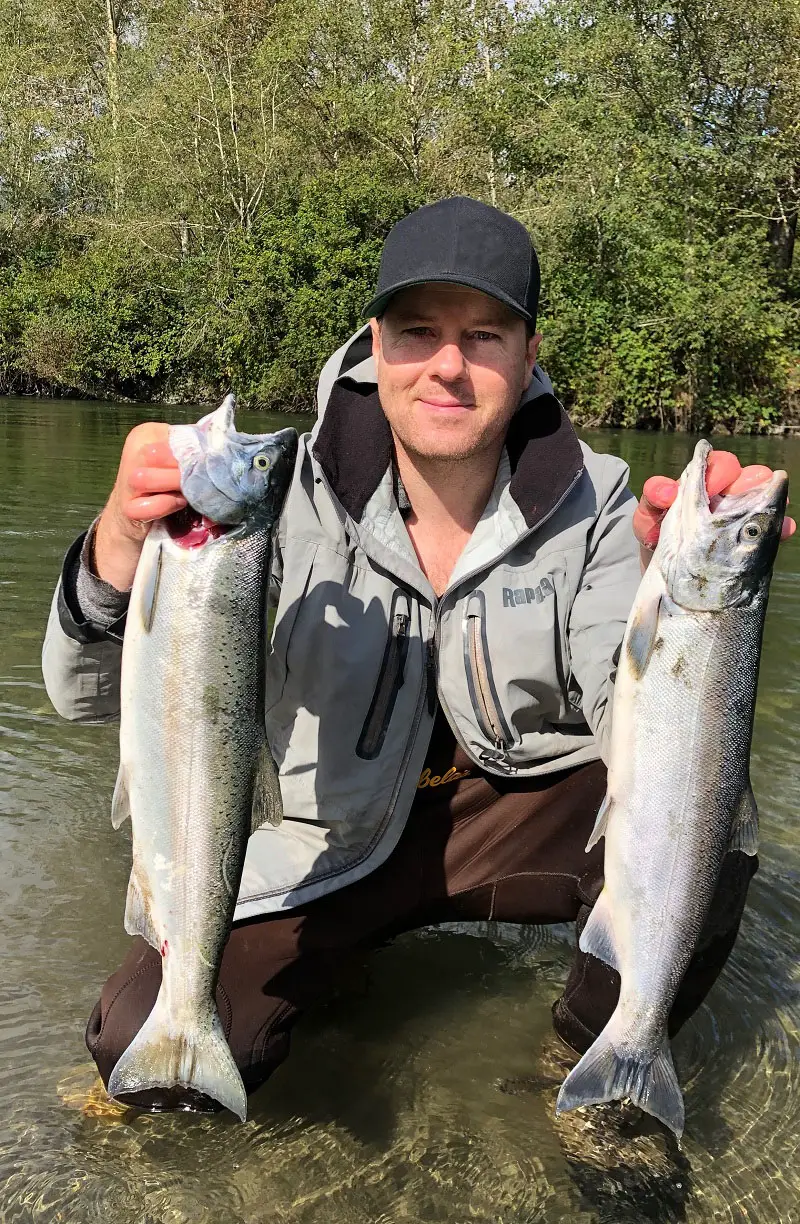
Final Thoughts
If you follow me on YouTube or read this website you’ll know I love to drift/float fish primarily, but twitching jigs has become my go to change up technique for Salmon and Trout in the rivers. I’ll also be bringing a twitching rod setup with some jigs along with my float rod.
If you haven’t tried it, I would highly recommend you give it a shot. You don’t have to spend a ton of money either. That’s why I appreciated Maximus rods as they have highend twitching rods for a very good price point. You don’t have to break the bank to try this technique out.
If you want to check out the Maximus Jigging rods or any of their other rods check out their website here. And if you have any questions on these rods or twitching jigs feel free to drop me an email on my Contact page or leave a comment below. Cheers! Jesse
